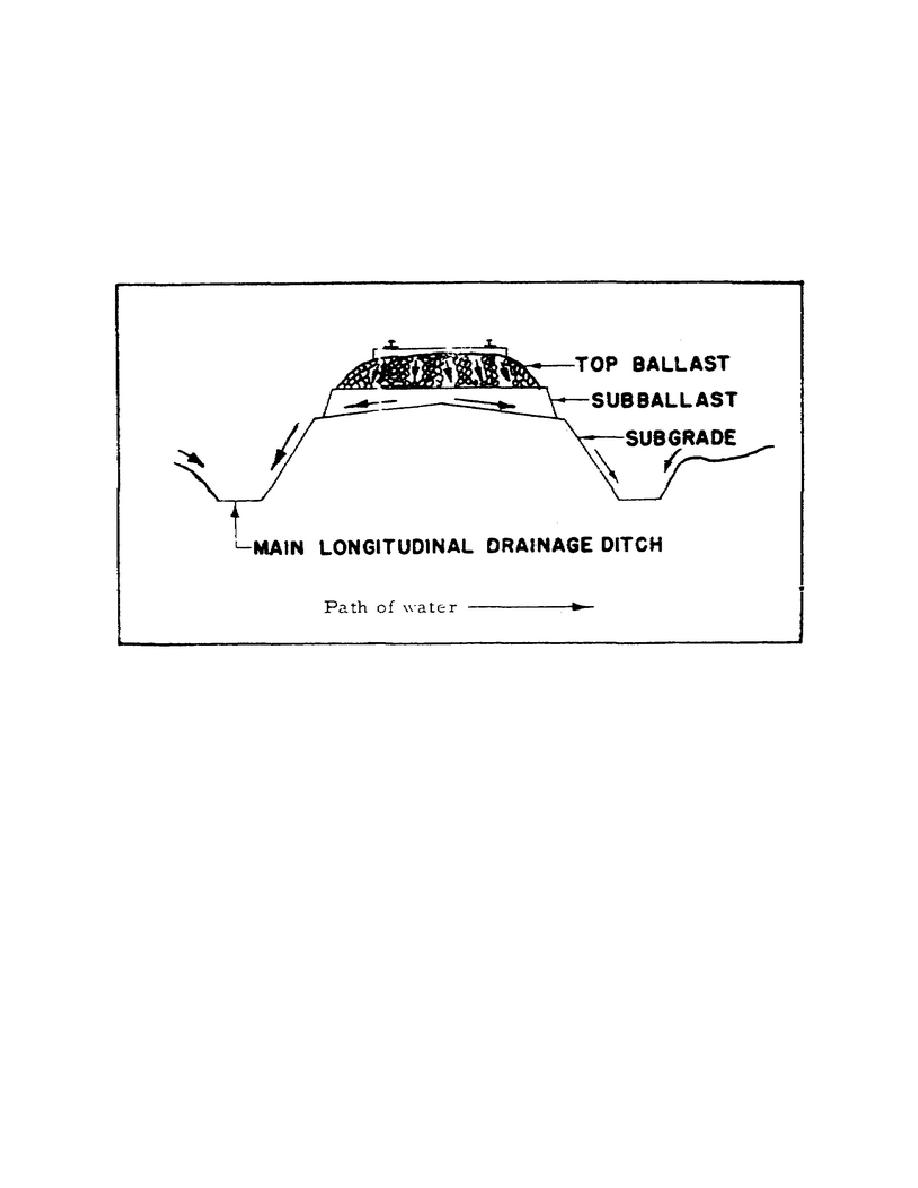
One function of ballast is to provide drainage. Good ballast is porous, and rain or water
from other sources falling on the track passes through it easily, finding its way to the
impenetrable sub-grade. The water then passes through the subballast over the sub-grade and
into a drainage ditch or drain, as figure 2.5 shows. As you read earlier and see in figure 2.4,
Then, too, ballast ground into dust or fine dirt and cinders blown onto the track may obstruct
drainage. Severely contaminated ballast must be cleaned or replaced.
Figure 2.5. Ballast As Drainage Medium.
2.13. CORRECTING CONTAMINATED BALLAST
Whenever ballast becomes so contaminated that drainage is seriously impaired, it must be
cleaned or, if cleaning is impossible, replaced. Usually, the first sign is a poor track surface, one
that refuses to remain corrected for any length of time. Investigating such spots generally reveals
poor drainage and pumping ties.
Not all types of ballast can be cleaned. Pit-run gravel or cinders are usually replaced
when they become too dirty to serve as satisfactory ballast. However, crushed stone or traprock
is easily cleaned; slag or screened-gravel ballast can also be satisfactorily cleaned. To clean
ballast, it is dug away from the ties and screened or forked. The following methods are used:
30



 Previous Page
Previous Page
